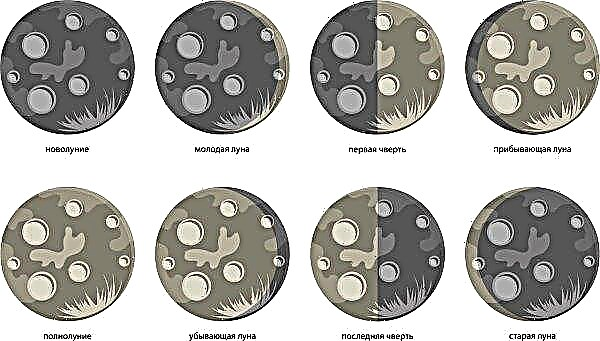From ancient times, sheepskin in the house is considered not only a sign of prosperity, but also a real find in the home interior. This fur allows you to perfectly decorate the room, and its high thermal insulation properties allow you to create comfort even in the coldest winter. However, the main drawback of the sheepskin is its susceptibility to all kinds of pollutants. The article will examine in detail how to clean a carpet and other products made from natural sheep’s fur, as well as give a natural white tint to sheepskin clothing.
Sheepskin house cleaning
Cleaning a sheepskin at home is considered a rather troublesome and time-consuming procedure, so most housewives try to shift it onto the shoulders of dry cleaners. However, this is not always convenient and beneficial for the wallet, therefore, more and more self-cleaning of the fur is becoming commonplace.
Did you know? Sheep farming is considered one of the oldest branches of agriculture. For the first time, sheep were domesticated about 8 thousand years ago in the territory of Ancient Syria, Turkey and Mesopotamia.
Today, for this, you can use a lot of professional tools, as well as many alternative methods, the most effective of which will be discussed later.
Dry cleaning white sheepskin
Dry cleaning is ideal for daily care of sheep’s fur. It helps to effectively deal with pollutants and protect the valuable thing from stubborn stains. The easiest way to dry clean is shaking or using a vacuum cleaner. This allows you to remove dust and all kinds of large pollutants from the product.

If the product during operation has changed its shade to gray, covered with dark and greasy spots, you need to use a more intensive cleaning method. The surface of the fur should be covered with fine table salt, semolina or potato starch, and then wiped with a soft brush. This procedure is carried out several times until the sheepskin is whitened completely.
Despite its simplicity and high efficiency, dry cleaning is not always suitable. Only perfectly dried fur is exposed to it, without the remains of drops and other things. Otherwise, moisture may react with the cleaning component and cause the formation of lumps, and this may render the product unusable, therefore it is recommended to dry the coat thoroughly at room temperature before the procedure.
Sheepskin cleaning at hand
In addition to dry cleaning, you can use a whole range of wet preparations for cleaning fur. Of the available tools for this, the most popular can be called simple hydrogen peroxide. A tablespoon of the liquid must be diluted in a liter of clean water, and then moisten the sponge with the resulting mixture. Using a wet sponge, gently run along the top of the wool so as not to wet the product, and then dry it.

Alternatively, a mixture of starch and aviation kerosene can be used. It is cooked to a thick consistency, and then applied to the surface of the fur. After the mixture has dried, the sheep’s fur should be shaken out or vacuumed.
When it is necessary to overcome greasy spots, the most reliable improvised means will be dried bread. Crusts need to wipe a dirty place several times.
The use of household chemicals
In most cases, cleaning with specialized chemicals starts after home methods have been powerless. To do this, use special tools for cleaning carpets or wool.
They represent a concentrate, which should be diluted in water, and then beat until foamy. The resulting foam is carefully applied to the surface of the sheepskin with a soft brush.
 As soon as the cleaned surface dries, the wool needs to be thoroughly vacuumed from large contaminants, and then combed.
As soon as the cleaned surface dries, the wool needs to be thoroughly vacuumed from large contaminants, and then combed.
Highly active chemicals instantly clean sheep's clothing, but there are some drawbacks to using them. First of all, such drugs often contain strong allergens, so they can cause acute allergic manifestations or other specific reactions of the body.
That is why they are not recommended for allergy sufferers, as well as in the case when small children are in the house. In addition, if they come into contact with the skin, such preparations can cause irritation; therefore, rubber gloves should be used during their use.
Did you know? Sheepskin products have special thermal insulation properties. In the cold season, they warm well, and in the heat they help to avoid overheating, which allowed the fur to gain special popularity even in antiquity.
Stain removal
Often, pollution on sheep's clothing is local in nature, and the product is covered with a variety of spots. In this case, most people expose the wool to complex and intensive processing. However, you can apply the local cleaning method, exposing the desired area.
In this case, the processing of color and white products should be strictly separated, not only the final success, but also the appearance of the wool cover depends on this condition.
On a colored sheepskin
If the stain has appeared on an artificially painted sheepskin, removing it will not be so simple. Under the influence of aggressive agents, the product may lose its saturated color, and if applied locally, it can cause a chemical burn to the coat color.
At home, it is best to use special cleaners for dyed wool. They can be replaced with an aqueous solution of ammonia (1: 1). It must be gently rubbed into the contaminated area, and then removed with a moistened sponge.
On a white sheepskin
One of the difficult tasks is to clean the white sheepskin from all kinds of stains of chocolate, juices, drinks, etc. In most cases, even after several washing cycles, residues of aggressive substances remain on the surface of the sheepskin. In this case, it is necessary to apply a solution of hydrogen peroxide (2 tbsp. L / 1 l of water).
This liquid should be applied with a sponge to the stain without wetting the base of the sheepskin, and then dried. If the stain cannot be eliminated at one time, the procedure is repeated several times until the traces of pollutants are completely eliminated.
Video: cleaning natural white sheepskin wraps
Whitening
The main problem that every owner of a sheepskin and other fur products faces is the change in the whitish shade of the fur to grayish-yellow. They fight it with bleaching with a concentrated solution of hydrogen peroxide.
The liquid is diluted with water in a ratio of 1: 1, after which the prepared solution must be poured into a mechanical spray gun and sprayed evenly on the surface of the fur. Then the sheepskin needs to be dried well. If the procedure did not bring the expected result, it is repeated.

However, often bleaching causes sheepskin irreparable harm. Under the influence of concentrated and aggressive agents, the destruction of wool, as well as its base, occurs.
This leads not only to a deterioration in the appearance of such products, but also significantly reduces the time of their use, therefore, it is often not recommended to bleach sheep skin, they carry out such a procedure only when necessary and no more than 2 times a year.
Cleaning the fur base
This procedure is carried out no more than several times a year.. Despite its need, it causes harm to the sheepskin, which over time leads to a sharp reduction in the life of sheepskin products. The simplest means for carrying out such a cleaning is chopped potatoes.
Important! Before using any of the above methods, a small amount of cleaning agent must be applied to an inconspicuous part of the product. This will help protect the fur from an unexpected chemical reaction with all kinds of impurities of cleaning substances.
The peeled tubers must be brought to a homogeneous mass using a meat grinder, and then evenly distributed over the sheepskin and walk well on it with a soft brush. As the potato mixture acquires a dirty shade, it is changed to a new one. At the end of the procedure, the remaining potatoes are removed with a damp sponge, and the product is dried at room temperature.

Washing
One of the universal methods of removing any stains and contaminants on a sheepskin is washing. This is the most aggressive, but at the same time effective way to clean the wool, as well as the base of the sheep's skin. In this case, you can traditionally apply both hand and machine wash, adhering to some features of these procedures.
Handwash
Sheepskin washing is ideal for removing medium-sized pollutants from small items, and also if you want to achieve a special delicacy. The general scheme of washing a white product looks quite simple.
 Rinsing is also carried out with warm water, otherwise the product may become deformed.
Rinsing is also carried out with warm water, otherwise the product may become deformed.
A small container must be filled with warm water (not more than + 40 ° C), and then dissolved in it detergent for carpets or fur products. Dirty sheepskin should be soaked in water for 30 minutes, after which it should be washed with light and smooth movements.
In case of contamination of the dyed fur, the sheepskin is soaked in a cleaning solution of room temperature. This is one of the main requirements, because otherwise the fur may lose its saturated color.
In this case, the soaking procedure can be extended up to 60 minutes. Other operations are no different from washing white fur, with the exception of rinsing, which is performed in cold water.
 Spin without twisting!
Spin without twisting!
The main disadvantage of handwashing can be called restrictions on the size of the product. This method cleans only small household rugs and other things, with a size of one of the sides no more than 50 cm. In all other cases, a washing machine is used.
Handwashing quite often leads to a change in the saturated gloss of the fur to a dimmer. In this case, the skin will need to be restored. To do this, a handful of walnuts must be slightly chopped, then wrapped in gauze, and then carefully wipe the pile.
Machine wash
Without problems, sheep’s skin can also be washed in a washing machine. To do this, you should choose a special mode of delicate washing or a program for cleaning wool products. Wherein, depending on the color of the coat, you need to choose a special temperature regime. White skin is washed at +30 ... + 40 ° С, color - only in cold water. In this case, the spin is set to a minimum or not more than 500 rpm.
Important! Regardless of the type of wet washing, for drying, the sheepskin should be spread out on a horizontal plane and periodically wiped with a dry terry towel. Otherwise, the skin may lose its shape and softness.
Despite the fact that after washing in the washing machine, the product cleans almost perfectly, such washing can not always go smoothly. Unlike manual, the procedure itself does not allow for adjustments and, if the wrong program is selected, it will not be possible to avoid damage to the fur.
 Incorrectly set when washing in a typewriter, the temperature regime leads to the fact that the product made of natural wool can “sit down” so to speak, that is, become smaller than it was originally.
Incorrectly set when washing in a typewriter, the temperature regime leads to the fact that the product made of natural wool can “sit down” so to speak, that is, become smaller than it was originally.
Conventional laundry detergent is unsuitable for this; sheepskin is machine washed with special liquid shampoos for wool or fur fabrics.
Sheepskin Care Rules
Each owner of valuable fur should be able to not only properly wash delicate products, but also be able to care for him. This will make it possible to avoid heavy pollution, as well as extend the life of the fur cover. To do this, you need to follow fairly simple rules that do not require specific knowledge and skills.
Sheared
The sheepskin pile itself is capable of self-cleaning, this is achieved thanks to a special substance - lanolin. However, such products cannot do without the help of the owner. To maintain the quality of shorn fur for a long time, you will need to clean it from dust at least 1 time per week.

For this, dry cleaning or simple vacuuming is suitable. At the same time, the power of the vacuum cleaner should be minimal, otherwise there is a high probability of damage to the fur. As dirty stains appear, the coat must be cleaned with a damp method.
It is better to do such procedures manually, since only in this case can damage to its structure be completely avoided. At the same time, it is permissible to carry out no more than 3-4 washings per year, otherwise the quality of the pile will decrease after 1-2 years of use.
Longhair
If a product made of sheep’s fur is distinguished by a long pile, in addition to the main cleaning, periodic combing of the villi will be required. Otherwise, after some time they will stick together, and the sheepskin in this case will completely lose its decorative value. Use a special or any soft brush for this.
 The fur is combed regularly, in the direction of hair growth, but no more than several times a month. Otherwise, the general scheme for caring for a long-haired sheepskin is no different from a sheared one and is carried out similarly to it.
The fur is combed regularly, in the direction of hair growth, but no more than several times a month. Otherwise, the general scheme for caring for a long-haired sheepskin is no different from a sheared one and is carried out similarly to it.
Sheepskin is one of the most popular natural products, characterized by special decorative properties. Unlike other fur products, it serves many times longer and does not require complicated care. However, from time to time, such a fur needs high-quality cleaning in a dry and wet way, otherwise in just a few years it will become completely unusable.












